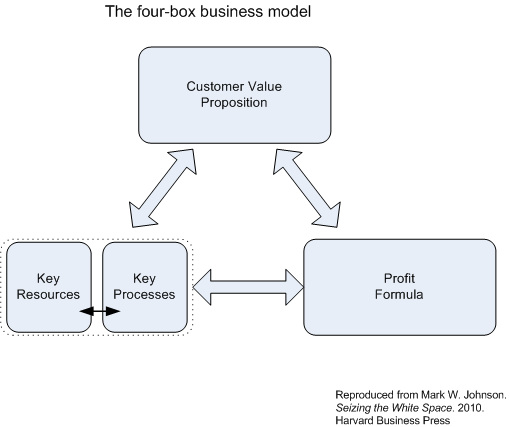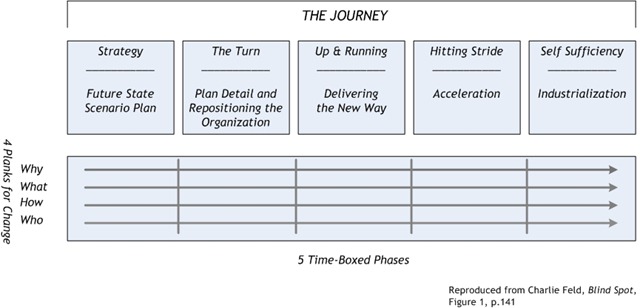Debates over whether the Internet is making us smart or stupid are entertaining in the bar and can serve as a pleasant background noise for ruminating during a keynote address in a dimly lit hotel ballroom. When I get back to work on Monday (or more likely on Sunday night) I return to the reality of working in a fundamentally digital environment. My files are digital, my tools are digital, and most of my interactions are digital.
As a knowledge worker, much of what I get paid for happens inside my own head. Before the advent of a more or less ubiquitous digital environment, however, that head work used to generate a variety of markers and visible manifestations. That visibility was important in several ways that weren’t evident until they disappeared:
- Seeing work in progress in front of me made it possible to gauge my progress and make connections between disparate elements of my work.
- Different physical representations helped to quickly establish how baked a particular idea was.
- Physically shared work spaces supported rich social interactions that enriched the final deliverables and contributed to the learning of multiple individuals connected to the effort.
For all the productivity gains that accrue to the digitization of knowledge work, one unintended consequence has been to make the execution of knowledge work essentially invisible, making it harder to manage and improve such work. The benefits of visibility are now something that we need to seek mindfully instead of getting them for free from the work environment.
Knowledge work is better understood as craft work; its products are valuable because they are creative and original. Delivering identical consulting reports to different clients is grounds for a lawsuit, not an example of good knowledge management practice.
From a craft perspective, examining and understanding what constitutes a quality client report, for example, is an important part of the apprenticeship that transforms a recently minted MBA into a seasoned advisor. The visibility or invisibility of knowledge work products can make this process more or less difficult.
Before PowerPoint, crafted presentations began with a pad of paper and a pencil. You knew by looking at a roughed-out set of slides that it was a draft; erasures, cross outs, and arrows made that more obvious. You then took your draft to the graphics department, where you were yelled at for how little lead time you provided. A commercial artist tackled your incomprehensible draft spending several days hand-lettering text and building your graphs and charts.
From there you started an iterative process, correcting and amending your presentation. Copies were circulated and marked up by your manager and hers. Eventually, the client got to see it and you hoped you’d gotten things right.
Work was visible throughout this old-style process. Moreover, that visibility was a side effect of the work’s physicality. Junior members of the team could see how the process unfolded and the product evolved. You could see how editors and commenters reacted to different parts of the product. Knowledge sharing was a free and valuable side effect of processes that were naturally visible.
With e-mail, word processors, spreadsheets, and presentation tools, maintaining visibility of your knowledge work (at both the individual and workgroup level) requires mindful effort. An office full of papers and books provided clues about the knowledge work process; a laptop offers few such clues. A file directory listing is pretty thin in terms of useful knowledge sharing content. In an analog process, it’s easy to discern the history and flow of work. When an executive takes a set of paper slides and rearranges them on a conference room floor, a hidden and compelling story line may be revealed. You can see, and learn from, this fresh point of experience. That’s lost when the same process occurs at a laptop keyboard at 35,000 feet. The gain in personal productivity occurs at the expense of organizational learning.
In the digital process, who creates and what they contribute risks becoming more an exercise in political posturing and interpretation than simple observation. The abstracts in a document management system reveal little about what work is exemplary, new, or innovative, and obscures emerging patterns.
Invisibility is an accidental and little-recognized characteristic of digital knowledge work. Seeing the problem is the first step to a solution. While better technology tools will play an important role, the next steps are changes in attitude and behavior at the individual and work group level. For example, organizing your own digital files into project-related directories might help, but not if you continue to name files "FinalPresentationNN.doc" where NN is some number between 1 and 15 representing a crude effort at version control. Embed more information in the file name where you know it will be visible even as you e-mail it around the organization. Use more informative subject lines on your email. Those file names and subject lines should provide the best clues possible as to what will be found inside.
Systems developers have learned that time invested in naming standards and conventions pays off. Teams crafting knowledge-work products should make the same investments. Better yet, spend time with good development teams and look for ways to adapt their practices to more general-knowledge work.
New disciplines take time to become habits. Fortunately, they also eventually become "the way we do work here." As the disciplines take root, taking a more aggressive look at technology tools becomes appropriate. Many of the office suite tools offer some form of internal revision tracking or auditing tools. What’s missing is any systematic way to integrate these tools into a disciplined practice. The capabilities are there but they are irrelevant if they aren’t used intelligently. A version control system doesn’t do anything until you incorporate it into the routine practice of creating a new document.
The right starting point is to simply make the flow of work more visible. I suspect that this is one of the underlying attractions of social networking and micro-blogging. They promise to restore some visibility to digital team work that we lost in the first generation of tools.
If visibility is, indeed, important to effective knowledge work what else would you recommend as ways to manage and increase the visibility of the intermediate and end products of knowledge work and the people-to-people interactions that take place in creating those products?


![Reblog this post [with Zemanta]](http://img.zemanta.com/reblog_e.png?x-id=1e3326d6-3752-4847-9476-4ea309b2a201)




![Reblog this post [with Zemanta]](http://img.zemanta.com/reblog_e.png?x-id=b629bdcf-db69-46ff-8132-527da6c018a1)
